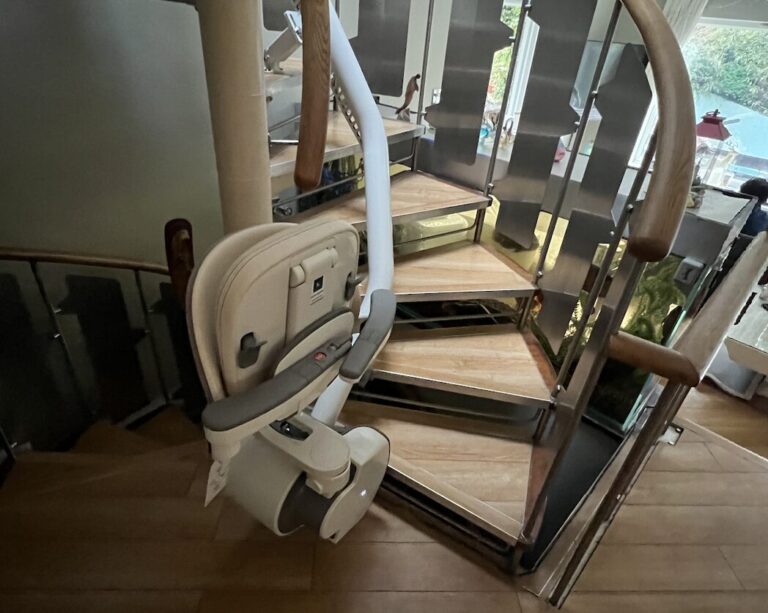Who should have a stairlift and why?
What comes to mind when you think of someone on a stairlift? The generic image we are used to is someone very old and frail, towards the end of their life. Whilst of course the main purpose of a stairlift is to assist those with reduced mobility get upstairs or downstairs, there are various possibilities as to why someone may have these needs.
At Kudos Stairlifts we are considerate of all of the potential reasons someone may need a stairlift – be it a particular disability or physical health condition at any age, general mobility deterioration or even as a short-term solution. The more we talk about the range of reasons, the more we reduce the stigma around using a stairlift. To put it simply, anyone could need to have a stairlift.
WHO & WHY?
- General ageing and reduced mobility and/or balance are a very common reason, but do not necessarily go hand-in-hand. A condition like arthritis, for example, may be more prevalent in older age groups but can impact people of all ages. The same can be said for conditions like vertigo, which again can occur at any age.
- Disabilities are also more prominent in our population than most people realise; the charity Scope (via the Family Resources Survey) found that 45% of pension age adults are disabled – but also that 23% of working-age adults and 11% of children are disabled.
- It is an understandable assumption that only people with limited physical movement would need to have a stairlift, however there are many stairlift users without a physical need – conditions impacting memory can also mean someone needs assistance in high-risk areas such as stairs.
- Some people may just need a short-term solution for their stairs, perhaps during recovery from an accident or surgery, or throughout ongoing medical treatment that takes its toll on the body and mind. Stairlifts do not necessarily signify the end of your mobility, but more a way to protect your mobility.
- Kudos Stairlifts are also seeing an increase in the number of people considering a stairlift sooner than they absolutely need one, largely to protect their quality of life and peace of mind – for them and their loved ones – click here to read our blog post explaining this further.
WHEN?
There are some helpful signs you can be mindful of, that can help you determine that a stairlift could in fact be of use to you:
- Is it taking you longer than before to climb the stairs?
- Are you starting to feel pain in your joints?
- Are you experiencing any balance issues?
- Do you feel out of breath and/or drained after climbing the stairs?
- Do you have a health condition that is likely to reduce your mobility in the near future?
So there we have it, proof that it’s not just the 92-year-old neighbour with chronic arthritis that should have a stairlift. Proof that it’s not just wheelchair users that should have a stairlift. Proof that it could be any one of us that should have a stairlift.
We recently explored the decline in the average age of a stairlift user, which seems very relevant to what we have explained above – click here to read our blog post explaining this further.

Contact our Client Focus Team today to discuss how a stairlift can improve and protect the quality of life for you and your family.
Call us now on 0800 1522400 to arrange your free, no obligation survey and quote, or to ask any questions you may have.
















